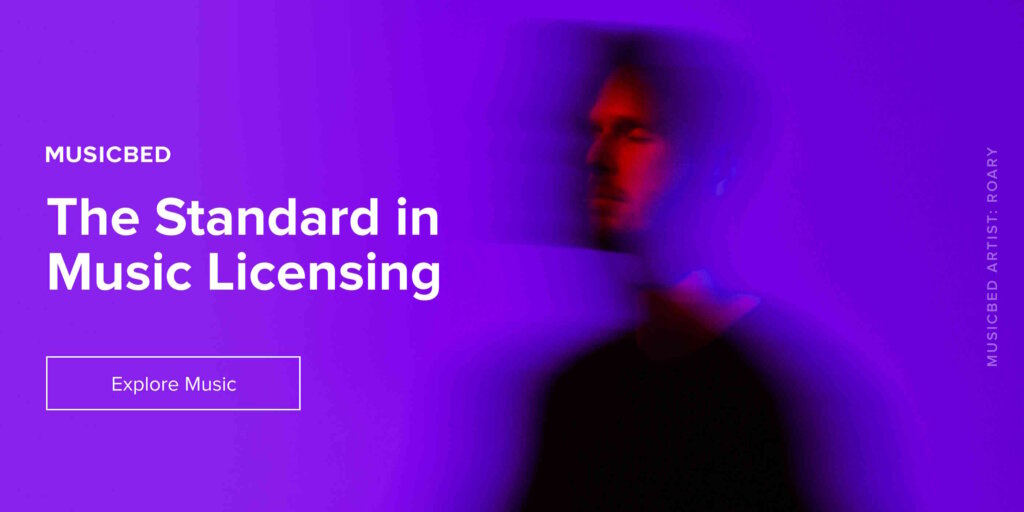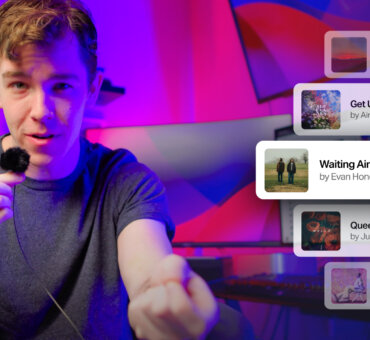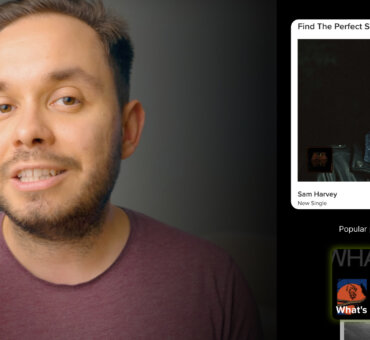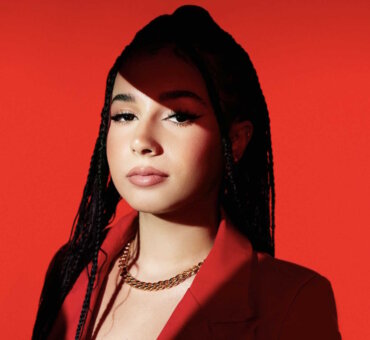Paid advertising is a marketing strategy in which businesses pay to display their ads to a targeted audience. In recent years, more and more of this paid advertising has taken the form of video advertising. As video continues to dominate user engagement and ad spend, understanding elements such as the leading ad platforms, production costs and music licensing are essential for both video creators and marketers.
Understanding Video Ads in Paid Advertising
Video advertising offers several benefits over other formats such as print and audio. Although production can be more expensive in comparison, the higher engagement and conversion rates often lead to a better return on investment compared to static ads.
Why? Video is the only medium that can combine visuals, sound and motion together. They capture attention quickly,e creating emotional connections with the audience much more effectively. This is more memorable, leading to stronger and more lasting impressions.
Because of this, videos tend to have high conversion rates and wider reach. Marketers incorporating video into their campaigns experience 34% higher conversion rates. They can show products or services in action, helping potential customers understand their benefits and features better, while building trust and credibility. Because they can be used across multiple platforms (more on that below), they tend to be seen by a larger audience, which can increase organic reach and brand visibility.
With higher engagement metrics, videos can also boost your performance in search rankings, especially when properly optimized with keywords, descriptions, and tags. According to Wyzowl, 91% of video marketers report that video marketing has contributed to a boost in their website traffic.
Videos are clearly the future, becoming more and more preferable with the rise of mobile video consumption across social media. Over 85% of internet users are watching online videos every month, and it’s obvious that the majority of people prefer to watch something rather than reading a text-heavy equivalent.
Marketers love working with video too, because it can be so quickly adapted to reflect current trends, events or viral topics, keeping the brand relevant. You can also create highly personalized and tailored videos for different audience segments, enhancing relevance and effectiveness.
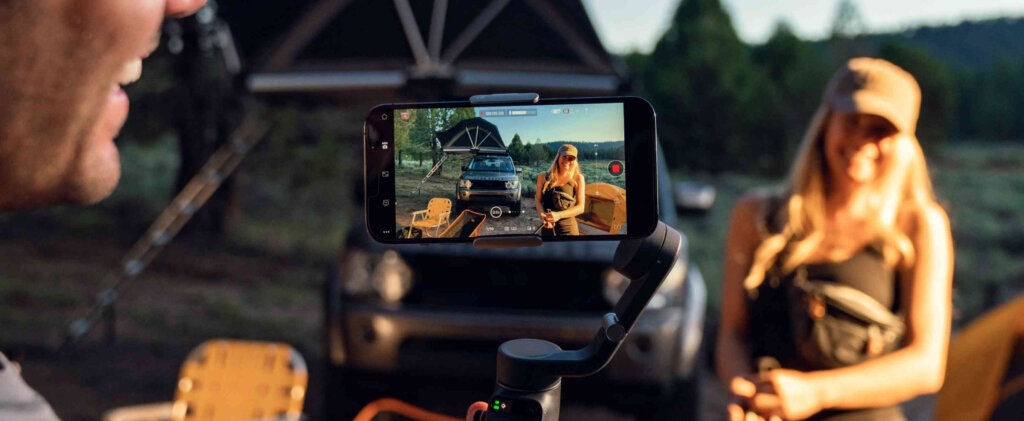
The different types of video ads
Below, we’ve highlighted some of the main types of video ads that you’re most likely to encounter in the world of paid advertising.
In-Stream Ads
In-stream ads are video ads that play either before, during or after the main video content. Any time you watch an ad on YouTube – that’s an in-stream ad.
Out-Stream Ads
Outstream videos are a form of native advertising that involves a large-format video player that emerges within the page content as the viewer scrolls. These may play within articles and text content, or within social media feeds.
Bumper Ads
An example of a bumper ad is the short, non-skippable ads that you get at the start of or during a video on YouTube.
Overlay Ads
An overlay ad is a semi-transparent ad that appears on the lower part of a video. It could take the form of text-only, but tends to include an animation and something that grabs the viewer’s attention.
Interstitial Video Ads
An interstitial video ad is a full-screen video ad that appears at natural transition points in an app or game. For example, if you’ve just completed a level of a mobile game, there may be a video advertisement playing before you can progress to the next level.
Shoppable Video Ads
Shoppable video ads are fairly new in the world of paid advertising – they’re interactive ads that allow viewers to click and purchase products directly, immediately.
Social Media Stories Ads
As most social media platforms now incorporate some sort of “stories” feature, vertical video ads appearing within the stories feature on platforms like Instagram, Facebook, and Snapchat are popular and more prevalent than ever.
Native Video Ads
A native video ad is one that blends seamlessly with the host platform’s content, appearing as if it were a regular video post in the feed.
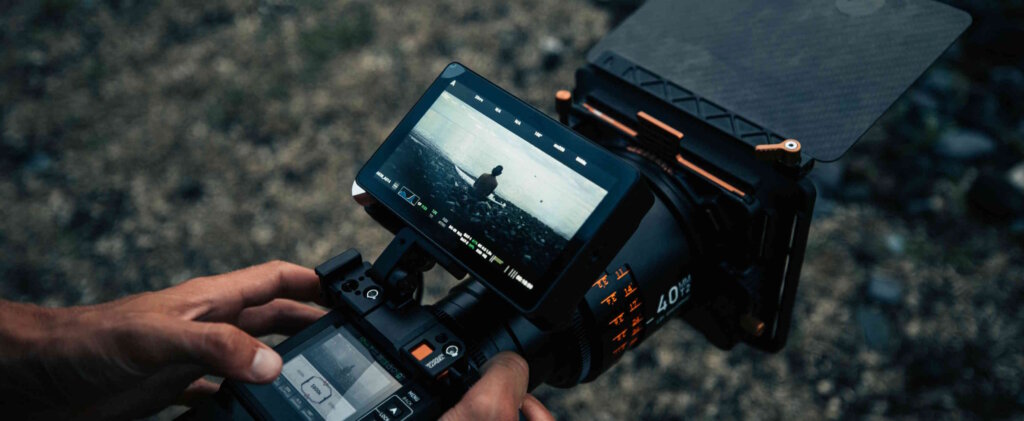
Different platforms for Video Ads
Over the past decade, we’ve watched the rise of vertical videos along with a far higher consumption of video content thanks to social media. There are several platforms that have become very popular when it comes to video advertising. Alongside the more traditional outlets, we’ll take a look at each below in a little more detail.
Facebook, with its 2.8 billion monthly active users and 1.2 billion Facebook Watch viewers, is a versatile platform for video advertisers. Notably, 65% of users are aged 35 or older.
- In-Feed Video Ads. These appear within users’ news feeds and are suitable for engaging storytelling and product showcases.
- Stories Ads. These vertical videos appear in the Facebook Stories section. They’re ideal for time-sensitive promotions and behind-the-scenes content.
- In-Stream Video Ads. These short ads are played during Facebook Watch or live videos. They’re particularly effective for brand awareness and recall.
- Carousel Video Ads. Carousels are a series of videos or images that users can swipe through. They’re great for displaying multiple products or features in one ad.
Instagram has a diverse user base, skewing younger than Facebook, particularly popular with millennials and Gen Z. According to Meta, 74% of users take action after viewing a brand’s video, such as visiting a website, making a purchase, or sharing the content.
There are a number of ways you can run Instagram ads:
- In-Feed Video Ads. These appear in the main Instagram feed as users scroll. They’re suitable for brand storytelling, product showcases, and announcements.
- Stories Ads. These are full-screen vertical videos appearing in the Stories section as you swipe through different Stories. Stories Ads are ideal for time-sensitive promotions, behind-the-scenes content, and interactive elements like polls and stickers.
- Reels Ads. Ads on IG Reels are short, engaging videos, very similar to TikTok. They’re perfect for creative and entertaining content, challenges and viral trends.
- Carousel Video Ads. Just like Facebook, carousel ads are a series of videos or mixed media that users can swipe through. They’re effective for showcasing multiple products or features in a single ad unit.
YouTube
YouTube, the world’s second most visited website after Google, generated $31.5 billion in global advertising revenue in 2023, according to Statista. It’s unsurprising to find that 90% of marketers are using YouTube in their video marketing campaigns.
Here are your options for YouTube video ads:
- TrueView Ads. These skippable ads appear before, during, or after a video. As you probably know, viewers can skip after 5 seconds. They’re ideal for storytelling, product demonstrations, and in-depth content.
- Non-Skippable In-Stream Ads. These are the YouTube video ads that viewers must watch before the main video content. There’s no option to skip here. They’re typically 15-20 seconds long and suitable for concise and impactful messaging.
- Bumper Ads. A bumper ad is another type of non-skippable, 6-second ad that plays before a video. It’s great for quick, memorable messages and brand reinforcement.
- Masthead Ads. You may have noticed these video ads that appear at the top of the YouTube homepage for 24 hours. These are best for large-scale brand awareness campaigns.
- Discovery Ads. Discovery ads appear in YouTube search results and related video sections, encouraging users to click and watch. They’re effective for driving traffic to your channel or specific videos.
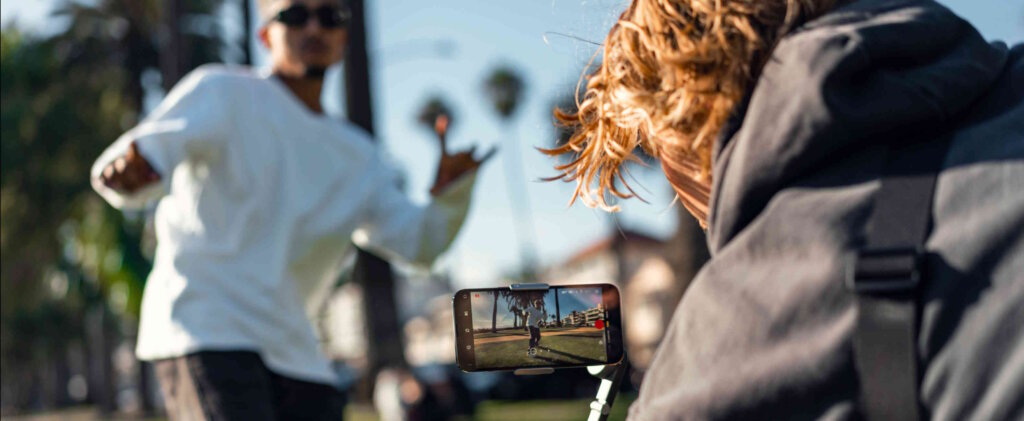
TikTok
While extremely popular with Gen Z and young millennials, TikTok is also expanding to older generations. Users are highly engaged, often creating and sharing short-form videos, participating in trends and interacting through likes, comments and shares.
TikTok video ads come in a number of different shapes and sizes:
- In-Feed Ads. These appear in users’ “For You” feed as they scroll. They’re effective for brand storytelling, product showcases and engaging content that blends seamlessly with organic posts.
- TopView Ads. TopView ads are full-screen takeovers that appear when users first open the app. They’re great for maximum visibility and high-impact campaigns.
- Branded Hashtag Challenges. These hashtag challenges encourage users to create content around a branded hashtag. They’re excellent for user engagement and virality, leveraging the platform’s community-driven nature.
- Branded Effects. Alongside hashtags, effects can also be branded with custom filters, stickers and special effects for users to add to their videos. This increases brand interaction and fun engagement with the audience.
- Branded Content. There are plenty of partnerships with TikTok influencers to create sponsored content. Branded content like this is effective for authentic and relatable promotion through trusted voices.
- Spark Ads. These types of TikTok video ads basically just boost organic posts or user-generated content as in-feed ads. You’re combining organic engagement with paid reach, enhancing authenticity.
LinkedIn, the top platform for online professional networking, is highly effective for targeted video advertising. By late 2023, LinkedIn had over 930 million users, with 61 million using it weekly for job opportunities. Users are interested in technology, finance, marketing, healthcare, education, seeking networking opportunities, industry news, career advancement and thought leadership.
Here’s how you can run LinkedIn video ads:
- Sponsored Content. These are classic video ads that appear directly in the LinkedIn feed. They’re ideal for brand awareness, product launches, thought leadership and educational content.
- Sponsored InMail. On LinkedIn, you have the opportunity to create video messages that can be sent directly to LinkedIn users’ inboxes. If done right, these are highly effective for personalized marketing, event invitations and direct engagement.
- Video Ads in LinkedIn Stories. Yep, even LinkedIn has Stories. Video ads in Stories work just like any other platform, appearing as a full-screen vertical video in between LinkedIn Stories. They’re suitable for time-sensitive promotions, company updates and behind-the-scenes content.
OTT
OTT (Over The Top Media services) platforms like Netflix, Amazon Prime, Hulu, Disney+, and Apple TV attract hundreds of millions of viewers monthly, making them ideal for video advertising campaigns.
Each internet streaming service will obviously differ, but here are a few of the most common ways you can create video ads for OTT services:
Pre-Roll, Mid-Roll and Post-Roll Ads. Just like the concept of YouTube, these are ads that play before, during or after the main content. Pre-roll video ads are ideal for brand awareness and ensuring the ad is seen before users engage with the content. Meanwhile, Mid-roll ads are effective for maintaining engagement, especially in longer content such as TV shows and movies. Post-roll ads can reinforce brand messages and capitalize on engaged viewers who have completed the content.
Pause Ads. As the name suggests, these are static or video ads that appear when the user pauses the content. These are non-intrusive and can capture attention without disrupting the viewing experience.
Interactive Ads. Some ads may include interactive elements such as clickable links, quizzes, or shoppable components. These are great for driving engagement and direct user actions, such as product purchases or website visits.
Broadcast TV
Of course, there’s still the traditional way of running a video advertising campaign with broadcast ads. Live news and sports events can capture particularly large audiences and make for a great video ad placement. Nielsen reported that some 123.7 million people in the US tuned in to watch the 2024 Super Bowl. With such a large captive audience, advertisers paid for that reach, at an average of roughly $7 million per 30-second spot.
If you’re interested in running broadcast ads, here are a few ideas:
- Commercial Break Ads. These are the classic Super Bowl ads – the ones that air during scheduled commercial breaks within programs such as sports events. These are ideal for broad brand awareness and reaching a mass audience during popular programming.
- Sponsorship and Product Placement. Integration of brands or products into the content of TV shows or events is big business. It can enhance brand association and visibility through subtle integration into the viewer’s entertainment experience.
- Infomercials. Infomercials are still a thing, believe it or not. These are longer-form advertisements resembling TV programs, typically used for product demonstrations and direct response advertising. They can engage viewers with detailed product information and encourage immediate purchases or inquiries.
- Promotional Trailers. Previews or trailers for upcoming TV shows, movies or events are common throughout the broadcast TV world. They generate anticipation and interest among viewers for upcoming content.
What Does a $50K Video Ad Look Like?
While a $50K budget is nothing to be sniffed at, it’s considered relatively low in the advertising world. But marketers are finding creative ways to maximize the impact a video ad has, making full use of the many formats and channels available to them and often exceeding the reach that a similarly-valued traditional broadcast video ad may have had in the past.
For example, let’s say FreshPet is working on its latest video ad:
While the main ad is good for YouTube and traditional TV, marketers may also look at how they can break down the footage into smaller, bite-sized chunks for other social media platforms. They may resize the ad into a vertical format and run it on Instagram Stories, specifically targeting dog-owning women between the ages of 25-50 who live in the US. It’s about making the most of the footage you have and being able to capitalize on the very accurate targeting that’s possible with social media.
Broadcast Video Ads
Once we start to move up in scale to broadcast video ads that cost something in the region of $300K, production levels and quality will naturally increase. You’ll have extensive creative freedom, and the ability to incorporate advanced techniques as well as high-end talent.
However, for all that work and effort to be effective, you still have to ensure the ad is seen by as many people as possible, right? That’s why marketers will pay so much for a Superbowl spot, because they know how many people are watching. Even then, you can’t tailor and target the video to very specific subsets of people.
Music Licensing for Commercial Video Ads
If you’re creating any type of paid video advertising, then you’re going to need some great songs to soundtrack that. In fact, some of the greatest commercials are renowned because of their music choices. When you use a song for your video ad, no matter where it’s being shared and viewed, you need to ensure you’ve obtained the correct rights and clearances in order to protect yourself legally, as well as to compensate the musical artists fairly.
That’s where Musicbed comes in. With our various subscription tiers, whether you’re an independent creator just starting a YouTube channel, or part of a large multimedia marketing agency, we’ve got you covered. Working with over 1,500 artists, we’ve compiled a catalog of over 50,000 songs to choose from. Even if you’re wanting to create custom music for your video ad, or obtain the rights to a really popular song, we’re here to help.
Wrapping up
So, that’s the world of paid video advertising. Video has become a dominant force in marketing due to its engaging nature and high conversion rates, and it’s clearly here to stay. By mastering the craft, understanding its ins and outs, and picking the right music, you can get ahead of the crowd in what is a highly competitive market.
















































































